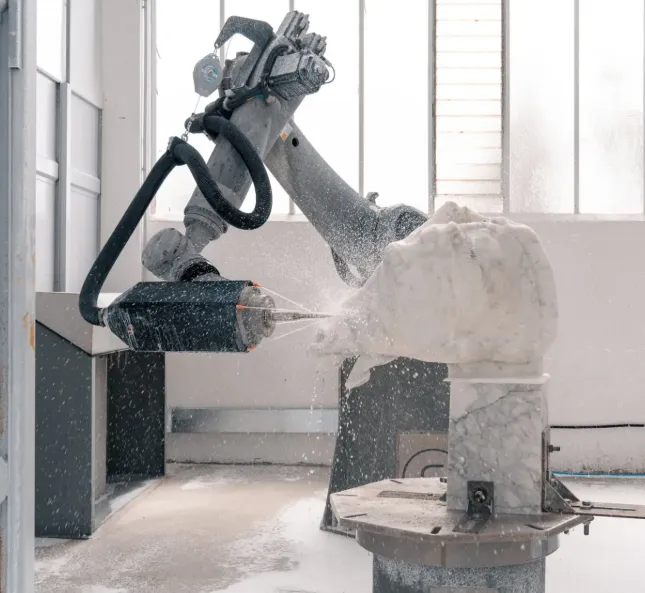The field of robotic material cutting has seen remarkable progress in recent years, with technological advancements significantly enhancing the precision and versatility of automated systems. Manufacturers across industries are increasingly turning to robotic cutting tools to replace traditional CNC machining or manual methods. Tools like laser cutting, waterjet cutting, and routing are at the forefront of these innovations, offering tailored solutions for various materials. As industries demand higher accuracy and faster production, robotic systems powered by AI and 3D vision are becoming essential for achieving better results and improving overall efficiency.
Advancements in Laser Cutting Robotics
Laser cutting technology has come a long way since it was first introduced in the 1960s. Today, laser-cutting robots are delivering near-CNC precision while operating at significantly higher production speeds. Laser cutting is ideal for trimming materials such as steel, die-cast aluminum, and automotive panels, thanks to its ability to create smooth, precise cuts with minimal waste.
There are several methods of laser cutting, including vaporization cutting, melt and blow, thermal stress cracking, and reactive cutting. Each utilizes a high-powered laser to create small, focused spots on materials, ensuring clean, smooth cuts. When mounted on a six-axis robot, the laser cutter can follow any contour, offering unparalleled flexibility in design. Some industries, like automotive manufacturing, are even integrating laser cutting with welding robots to create more dynamic and adaptable production lines.
Laser-cutting robots are particularly beneficial for companies looking to speed up the finishing processes without sacrificing precision. These automated systems not only offer faster output than manual or CNC methods, but they also improve flexibility and reduce product waste, maximizing overall production efficiency.
Innovations in Waterjet Cutting Technology
Waterjet cutting, a technology that has been in use for nearly 70 years, offers an alternative to traditional cutting methods by using high-velocity water streams to cut or drill through materials. Unlike laser cutting, waterjet cutting avoids thermal processes, making it ideal for materials that cannot withstand heat, such as food, paper, or certain fabrics.
A newer development in waterjet technology is abrasive waterjet cutting, which incorporates garnet particles into the water stream to enhance its ability to cut through tougher materials like stone, metal, and ceramics. This addition has greatly expanded the versatility of waterjet cutting, making it suitable for a wider range of materials. The ability to seamlessly switch from soft materials like paper to dense ones like titanium is one of the key advantages of this technology.
However, while waterjet cutting is highly flexible, it’s not suitable for all materials. For example, tempered glass can shatter when exposed to the high-pressure water stream. Therefore, careful research and development are essential to determine the best cutting method for specific materials.
Advancements in Automated Routing Technology
Automated routing has also seen significant improvements, particularly in precision tasks that require material removal and trimming. Using a six-axis robotic arm equipped with a spindle and routing bit, robots can perform repetitive drilling and trimming tasks with consistent accuracy, which significantly enhances production output and product quality.
Robotic routing is especially useful in industries like aerospace, automotive, marine, and prototyping, where precision is paramount. For example, one company has implemented an automated routing system to drill fiberglass boat parts, reducing production time by 50%. Previously, these tasks were done manually, which was time-consuming and error-prone. By automating the process, workers can focus on higher-value tasks, and production becomes more efficient.
Conclusion
Robotic material cutting offers a wide range of automated solutions for various manufacturing applications, including laser cutting, waterjet cutting, and routing. The key to successfully integrating robotic cutting into production lies in selecting the right technology for the specific task. Factors like material type, product size, and required precision must be considered to ensure optimal results.
When implemented correctly, robotic material cutting systems deliver significant benefits such as increased production speed, reduced errors, and greater operational flexibility. As new technologies like AI and connected networks continue to evolve, the potential applications of robotic cutting are set to expand even further, opening up new possibilities for manufacturers around the world.







